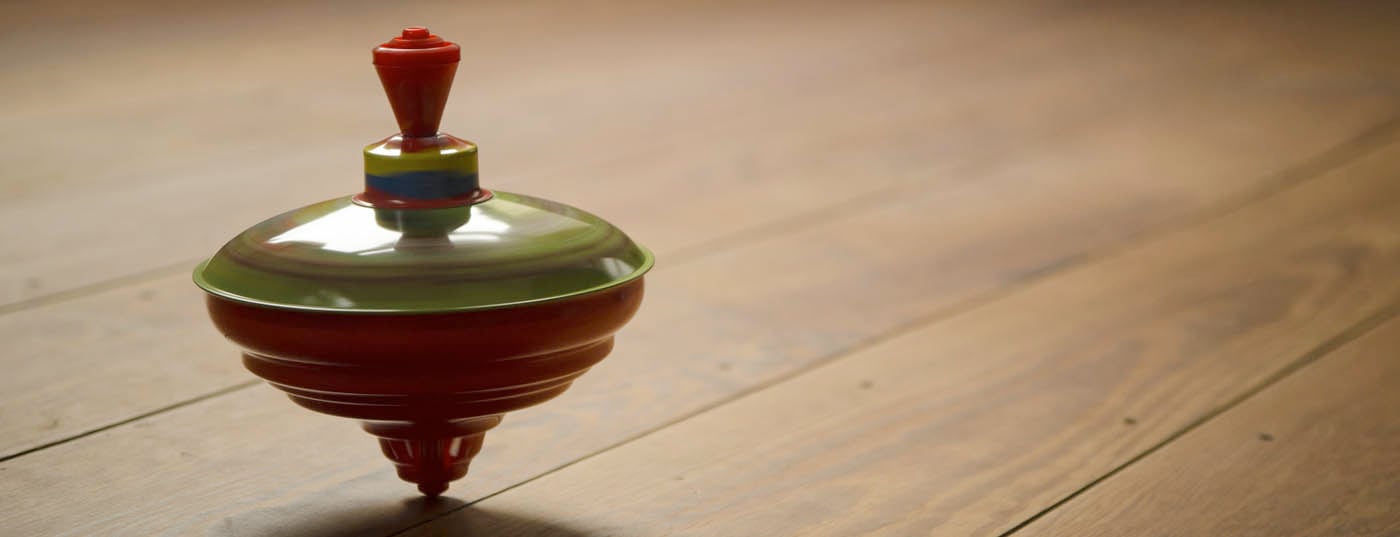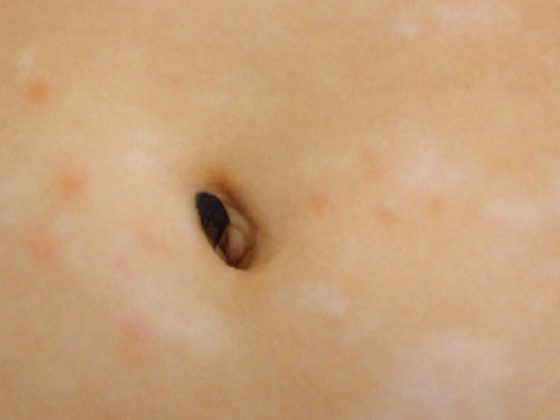HAUSARZT PRAXIS asked Dr. med. Annika Schade, FMH specialist for ORL and neurology, RehaClinic Bad Zurzach, senior physician in the acute neurorehabilitation department of RehaClinic at the Kantonsspital Baden site, about the topic of dizziness. The discussion focused on diagnostic strategies and differentiation of the various forms of vertigo. In addition, diagnostic and therapeutic maneuvers and the possibilities of pharmacological treatment were discussed.
Dr. Schade, dizziness is widespread and can be a symptom of various causes. What forms of vertigo / vertigo syndromes are there and how often do they occur in your experience?
Dr. Schade:
Basically, vertigo complaints can be classified according to the type of vertigo and the most likely etiology.
The type of vertigo distinguishes between directional vertigo such as spinning vertigo as well as elevation vertigo and non-directional vertigo with gait unsteadiness.
In terms of etiology, vertigo symptoms are divided into peripheral-vestibular, central-vestibular syndromes, and non-vestibular vertigo syndromes. Peripheral vestibular disorders, the most common form at approximately 40%, are characterized primarily by benign paroxysmal positional vertigo and peripheral vestibulopathy (synonym: neuritis vestibularis). Cerebrovascular events, vestibular migraine, and inflammatory CNS diseases (especially multiple sclerosis) are central vestibular diseases with a frequency of almost 30%. The causes of non-vestibular vertigo syndromes are numerous: mental illness, presyncope, degenerative changes of the cervical spine, and drug side effects [1].
What is the significance of apparative diagnostic tools in the clarification of vertigo?
Key to making a diagnosis of the leading symptom of vertigo is accurate history taking and clinical examination, as the diagnostic criteria for most vertigo syndromes are based on this information.
The apparative examinations such as MRI, CT or caloric testing have a secondary importance. Up to 20% of diffusion MR skulls are unremarkable in posterior fossa cerebral infarction in the first 24 hours after symptom onset [2].
The history should ask about the type of vertigo, the duration of the vertigo symptoms, triggers/aggravation of the vertigo, and accompanying neurological symptoms. If neurologic accompanying symptoms are present, a central vestibular cause is likely. In this situation, a rapid emergency clarification should be made, especially if it is an acute onset of vertigo.
Evidence of skew deviation (vertical divergence position of the eyes) in the alternating cover test, gaze direction nystagmus opposite to the direction of spontaneous nystagmus, or a normal head impulse test in acute vertigo are indicative of a central vestibular disorder (triad HINTS: Head Impulse Test, Nystagmus, Test of Skew). As a summary acronym, one can remember the word INFARCT (Impulse Normal or Fast-phase Alternating or Refixation on Cover Test).
Benign peripheral paroxysmal positional vertigo (BPPV) is most commonly encountered. How are the different forms (BPPV of posterior, horizontal, and anterior arcuate) reliably diagnosed?
The suspected diagnosis of BPPV can already be made by its characteristic short episodes of rotational vertigo after a change of position with symptom-free intervals in between. If the episodes are triggered by movements in the vertical plane, it is the most common form, that of posterior arcuate (about 80%). If movements are only triggering in the horizontal plane, this speaks for the horizontal variant. The anterior form of BPPV is controversial. If spinning vertigo can be triggered by movements in all directions with slow disappearance of the spinning vertigo at rest, mild peripheral vestibulopathy must be considered.
The suspected diagnosis in the posterior form is confirmed by the Hallpike maneuver with simultaneous evidence of a passive rotatory nystagmus and rotatory vertigo sensation in the patient. The horizontal shape can be triggered by the so-called barbecue 90° maneuver on both sides. In this case, a horizontal nystagmus is observed.
Regardless of the reduction maneuver performed, after successful treatment, there may be transient lightheadedness with discrete gait unsteadiness, presumably due to dysfunction of the utricle.
Although the reduction maneuvers can be performed easily and quickly, self-treatment by the patient should be avoided. If nystagmus findings are absent during provocative maneuvers or if the patient does not experience vertigo despite observation of nystagmus, the diagnosis of BPPV must be doubted and central vestibular disease must be considered.
Which maneuvers are preferred in BPPV therapy and how effective are they?
In German-speaking areas, the posterior form of BPPV is treated by the Epley repositioning maneuver; in French-speaking areas, the majority use the Semont maneuver. Both reduction maneuvers are equivalent with approximately 90% success rate.
Accordingly, in the horizontal version, the barbecue maneuver applies a 270° rotation around its own axis. The Gufoni maneuver is an alternative option.
Meniere’s disease is mainly treated prophylactically. In addition, antivertiginosa help in the acute stage. What is the study situation, are there any relevant new findings or new active substances in the field of Meniere’s disease?
High-dose betahistine therapy, as you mentioned, has been used in the sense of prophylaxis for many years. Good success in basic and attack therapy has been achieved by intratympanic injection of gentamicin and, for the last few years, cortisone. I am not aware of any newer successful treatment methods or substances.
Is the treatment of vestibular migraine different from that of migraine?
No other cause of vertigo is currently as controversial internationally as vestibular migraine, not least because diagnosis occasionally presents difficulties.
The diagnosis is straightforward when there are repeated reversible attacks with varying combinations of vertigo and migraine headache, as well as accompanying symptoms typical of migraine.When attacks of vertigo manifest in isolation and especially without headache, the diagnosis is not always clear.
Currently, there is no uniform treatment recommendation for vestibular migraine. The treatment recommendation for vestibular migraine is currently based on the treatment guidelines for “classic migraine”. There is only one small study on the treatment specifically of vestibular migraine. Here, the effect of zolmitriptan on vertigo was tested: The substance was effective in 38% of patients with vestibular migraine (placebo 22%) [3]. All other data on therapy are based on individual case reports, retrospective case series, and open-label therapy studies. A therapy recommendation that would be particularly or specifically suitable for the treatment of vestibular migraine cannot yet be derived from these data. For attack treatment, zolmitriptan can be tried; for more than three attacks per month, a basic therapy with metoprolol, amitriptyline, or flunarizine can be chosen depending on the patient’s appropriate comorbidities (therapy recommendation of the Swiss Headache Society).
Therapies for phobic vertigo have rarely been tested in controlled randomized trials. How do you proceed in practice without a current scientific basis?
The difficulty of the phobic resp. psychosomatic vertigo syndrome – the second most common cause in patients with vertigo over 70 years of age – is diagnosis, as specific clinical examination parameters are lacking. Often, this diagnosis can only be suspected after several consultations and unremarkable clinical and instrumental examinations. In such situations, it is advisable to consult a psychiatrist or psychologist. It is not uncommon for physiotherapy-led dizziness and balance training to have a positive impact. However, both duration and complexity of the complaints often determine whether these therapeutic measures are successful.
What is the role of pharmacotherapy in the overall treatment concept of acute neuritis vestibularis?
In vestibular neuritis, symptomatic therapy with antiemetics may be given for the first few days if nausea and vomiting are pronounced. Because of the sedative side effect, this therapy should be prescribed only for a short time, if possible. In a placebo-controlled study, significant recovery of vestibular hypofunction was observed after short-term treatment with glucocorticoids [4], so such use is recommended. However, early mobilization of the patient is important. Furthermore, to improve the central compensation of the peripheral deficit, physical therapy with exercises of balance, stance regulation and gaze stabilization, especially in elderly patients, is essential and crucial for the long-term prognosis.
Interview: Andreas Grossmann
Literature:
- Brandt T, et al: Vertigo leading symptoms dizziness. 2nd ed. Heidelberg: Springer Medizin 2012.
- Tarnutzer AA, et al: Does my dizzy patient have a stroke? A systematic review of bedside diagnosis in acute vestibular syndrome. CMAJ 2011 Jun 14; 183(9): E571-592.
- Neuhauser H, et al: Zolmitriptan for treatment of migrainous vertigo: a pilot randomized placebo-controlled trial. Neurology 2003; 60: 882-893.
- Strupp M, et al: Methylprednisolone, valacyclovir or the comination for vestibular neuritis. N Engl J Med 2004, 351: 354-361.
HAUSARZT PRAXIS 2015; 10(2): 22-25











